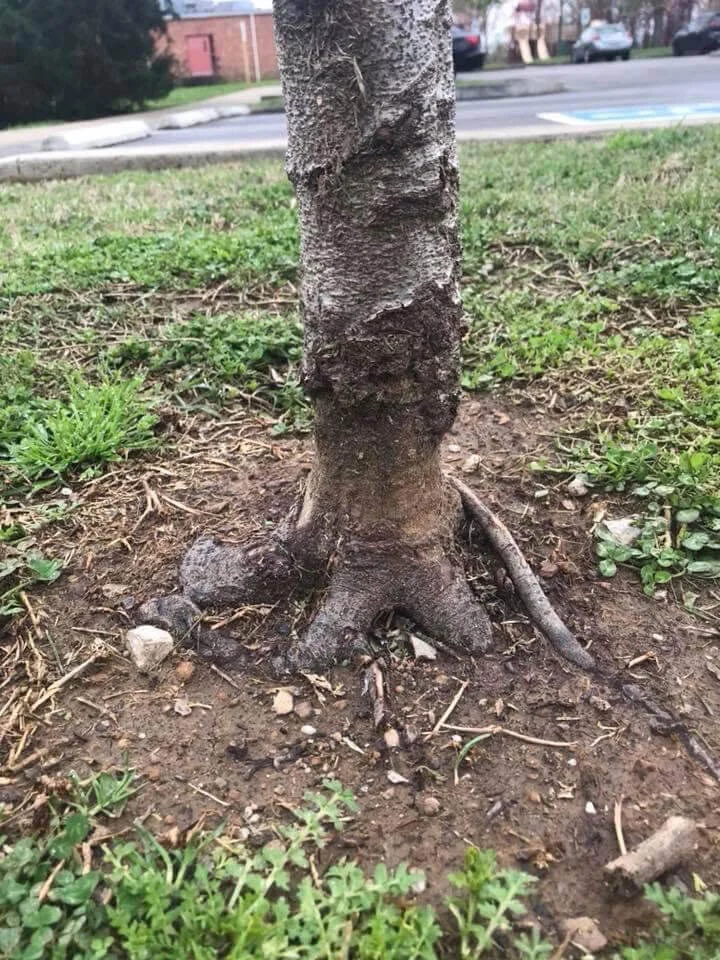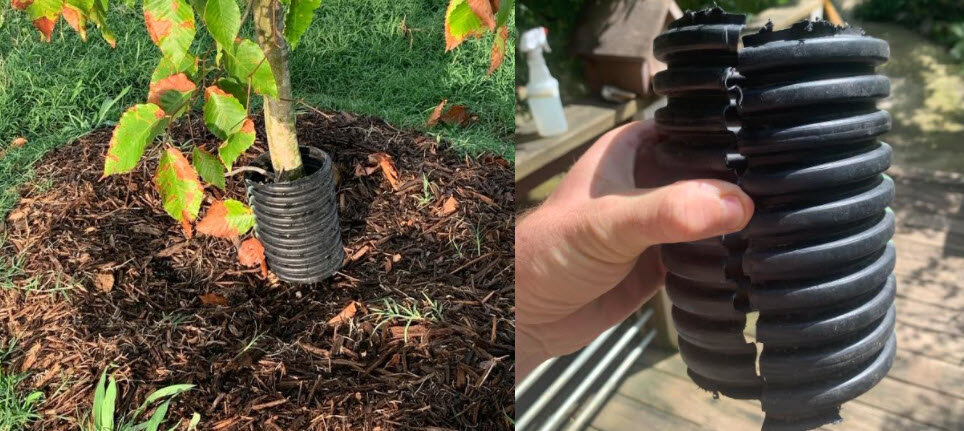How to Slowly Kill Your Tree, Part 1: Weed Trimmers
A young tree shows bark damage at its base from lawn equipment.
If you’ve planted a new tree in your yard, your main concern is keeping it alive! This is the first in a three-part series on avoiding common mistakes that can kill young trees.
Properly Remove Weeds Around Trees
Weed trimmers are the #2 killer of newly planted trees, second only to lack of water. There’s an easy solution to this problem, which is almost completely within the hands of those who use lawn equipment near trees. By making sure to keep weed trimmers and lawn mowers from getting too close to tree trunks, a lot of avoidable long-term damage can be prevented.
When the bark of a tree is damaged, it can severely harm the tree. Even though bark appears to be a superficial part of a tree, it is the tree’s skin and it protects a sensitive layer just beneath it (called xylem) that transports water throughout the plant. The outer layer is one of the living parts of a tree, and when it is damaged and stressed, it affects the entire tree’s biology.
When bark is removed or cut by a weed trimmer or mower, it can lead to short-term problems like decay, creating entry points for fungus, bacteria or insects. Long-term issues from damage to bark include brittle branches and other structural weaknesses that stem from poor health. This can contribute to later damage from falling branches or trees.
Severe damage from weed trimmers has left this tree trunk extremely malformed.
Keep Your Distance from the Trunk
One of the easiest and most aesthetically pleasing ways to avoid getting too close to a tree’s trunk during lawncare is by laying out a mulch barrier extending several feet outward around the tree. When a tree is young, the mulch will protect its very sensitive bark during the important initial years of growth. In maturity, maintaining bark will keep trees structurally sound and in good health for longer lives. Mulch rings also contribute to healthy soil for the tree’s root system.
In addition to providing nutrients, suppressing weed growth and encouraging biological activity, avoiding the area around the base of a tree helps avoid soil compaction, which is another major danger to a tree’s root systems and its entire structural integrity. Roots need aerated soils that have space for insects to move, water to collect and roots to expand. Roots drink the water, which is moved up through the tree through its sub-bark layer and is distributed to branches and leaves all over the tree.
Another excellent and affordable way to protect your tree is to cut a 4” diameter single walled drainage pipe into a 6” long segment with a slit down the side and install it around the base of the trunk. This way when lawn mowing equipment comes near by, it will hit the sides of the pipe material and not the trunk. As the tree grows bigger, it can withstand the occasional nip of the weed trimmers better, but if there will be consistent lawn mowing activity around the tree when it is has outgrown a 4” diameter pipe, there are 6” diameter pipe options.
A Canopy is Only as Good as its Bark
Paying attention to the base of your trees when caring for a lawn can prevent long-term damage to the trees’ ability to take in and distribute water and minerals from the soil. A healthy tree is a productive member of the wider canopy and the ecosystem services we depend on, including stormwater absorption, air purification and temperature control. Trees in cities, towns and near homes are exposed to machine damage in ways that wild trees aren’t, so they require extra care and attention.
By establishing boundaries, homeowners and landscape professionals can maintain a beautiful yard while creating good growth conditions for trees and improving our urban tree canopy.



